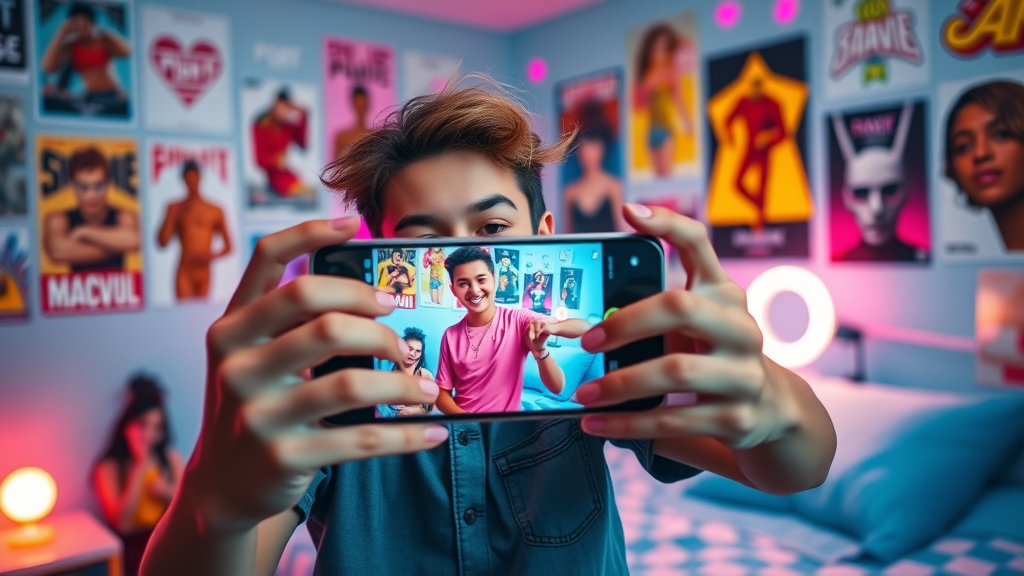Did you know social media algorithms decide what millions see daily? Mastering them can exponentially boost your content's reach, engagement, and impact. Understanding these invisible forces is key to standing out and growing your audience effectively in today’s crowded digital world.

What Are Social Media Algorithms? Setting the Foundation
Social media algorithms are the hidden engines shaping your digital experience every day. These computational formulas determine what content rises to the top and what gets buried—across every major social media platform like Facebook, YouTube, TikTok, Instagram, Twitter, and even Netflix. At their core, social media algorithms analyze vast amounts of data, such as your interests, past interactions, and even how long you watch a video, to deliver a finely curated feed. For both brands and creators, understanding these systems means you can create content that appeals to algorithms and, most importantly, to real audiences.
If you're creating content online, the reach of your posts depends on how well you work with these media algorithms. Instead of chronological posts, modern platforms use a blend of machine learning, predicted interests, and trending topics to deliver a unique, personalized experience for every user. This process isn't just about visibility—it's about relevance and engagement. The better you understand how algorithms work, the easier it is to craft content that consistently connects with your audience, builds trust, and grows your influence in a crowded digital world.
Defining Social Media Algorithms: The Basics
At the simplest level, social media algorithms are automated processes that sort and rank every piece of content before a user ever sees it. Whether you’re scrolling on Instagram or watching recommendations on YouTube, these media algorithms analyze factors like recency, engagement (likes, comments, shares), and the type of content. Based on user data, algorithms determine which posts best match your interests—delivering a feed that’s relevant for each individual. For active users, this system means your feeds feel uniquely “yours.” For creators and marketers, knowing what signals matter most is the first step to optimizing your strategy for maximum organic reach.
Algorithms use a range of ranking signals to decide what shows up: who published the content, past post performance, and user behavior (like watch time or past clicks). Modern machine learning enables platforms to constantly refine these decisions, tailoring each media user's experience over time. In short, algorithms determine what content each social media user sees—shaping the news you read, the videos you binge, and the brands you engage with every day.
Why Social Media Algorithms Matter for Content Creators and Brands
For any content creator, the success of a post or campaign depends heavily on the nuances of each platform’s algorithm. Media algorithms directly impact how many people see, interact with, and share your work. If you know which ranking signals matter—such as engagement, recency, and content variety—you position yourself ahead of the curve. Brands and creators who tailor content based on user behavior and trending topics consistently outperform competitors who ignore these invisible rules.
When you understand how social media algorithms work, you shift your approach from guesswork to strategy. This isn’t just about gaming the system; it’s about creating content based on genuine audience interests, maximizing organic reach, and building lasting engagement. As platforms evolve, those who keep pace with new machine learning updates and key ranking factors remain visible—and memorable—to their communities.
"Did you know social media algorithms decide what millions see daily? Mastering them can exponentially boost your content's reach, engagement, and impact."
What You'll Learn About Social Media Algorithms
Increased reach and visibility for your content
Higher engagement and community growth
Better audience targeting using data-driven insights
Analytics-driven content creation and improvement
Platform-specific tips for YouTube, TikTok, Instagram, and more

How Social Media Algorithms Work: The Science Behind the Feed
Ranking Signals and Their Impact on Media Algorithm Performance
The heart of every social media algorithm is its ranking signals. These are the rules and data points algorithms use to sort and display content. Key ranking signals include engagement rates (likes, shares, comments), recency (how fresh the post is), content relevance (match to user interests), and interaction quality (such as watch time or click-through rate). Platforms like YouTube, TikTok, and Instagram all weigh these factors differently, but each aims to boost user satisfaction by surfacing the most interesting, timely, and engaging posts for each individual media user.
Understanding the priority and weight of these ranking signals unlocks better results for content creators and brands alike. For example, YouTube’s algorithm performance heavily factors in watch time, session length, and session start sources, while TikTok emphasizes video completion rate and rapid audience engagement. By aligning your content strategy with these signals, you’re more likely to appear in feeds, “For You Pages,” and recommendations across every media platform. Mastery of these details is what separates top creators from the rest.
To further enhance your content’s performance, it’s worth exploring how video marketing strategies can work hand-in-hand with social media algorithms. Understanding the unique strengths of video content can help you maximize engagement and visibility across platforms—discover more in these five powerful reasons why video marketing is so effective.
How Major Social Media Platforms Weigh Ranking Signals
Platform |
Engagement |
Recency |
Content Type |
Relevance |
Personalization |
Watch Time |
CTR |
|---|---|---|---|---|---|---|---|
YouTube |
High |
Medium |
High |
High |
High |
High |
|
TikTok |
Very High |
High |
Medium (short-form video) |
Very High |
High |
Medium |
Medium |
High |
High |
High (Reels, Stories, Posts) |
High |
High |
Low |
Medium |
|
High |
High |
Medium |
High |
Medium |
Low |
Medium |
|
Netflix |
Low |
Medium |
High (shows, movies) |
High |
Very High |
Very High |
Low |
Amazon |
Medium |
Low |
High (products) |
High |
Very High |
N/A |
Very High |
User Experience and Social Media Algorithms: Why Your Feed Looks the Way It Does
Ever wondered why your feeds feel so uniquely tailored? User experience is at the core of every media algorithm. Platforms want you to spend more time with them, so they use advanced machine learning to predict which videos, posts, or stories will keep you engaged longer. They monitor every action—from a quick like to lingering over a piece of content—to serve up a personalized stream that feels fresh, entertaining, and relevant.
As a social media user, your individual behavior—such as searching for specific topics, saving posts, or skipping videos—directly influences what you see next. This high level of personalization helps create an addictive, rewarding user experience. For creators and brands, it means your content must be crafted with both audience preferences and algorithmic logic in mind. The results? Feeds full of recommendations, trends, and content that feel like they were made just for you.

"Algorithms are invisible gatekeepers shaping what we see and share on every major platform."
Platform Deep Dive: Major Social Media Algorithms Unpacked
YouTube Algorithm: CTR, Watch Time, and Session Time Explained
YouTube’s media algorithm is among the most sophisticated, ranking each video by a blend of signals. Click-Through Rate (CTR) measures how many viewers click on a video after seeing its thumbnail or title. But it doesn’t stop there—watch time and session time help YouTube decide which videos to recommend or feature on the home page. If your videos keep viewers engaged for longer periods, the YouTube algorithm rewards your content with more organic reach and recommendations.
For content creators, this means optimizing everything from the thumbnail image and catchy title to the first few seconds of your video. Retaining viewer attention (audience retention) and encouraging viewers to watch multiple videos in a session gives your channel a powerful boost. The YouTube algorithm also considers relevance and upload frequency—ensuring an active, topical mix of content is key.
Thumbnail image
Video titles
Watch time
Audience retention
Relevance (to user interest & trending topics)
Frequency of uploads
YouTube Algorithm Visualization—How YouTube Determines What You See
TikTok Algorithm: Power of the 'For You Page' and Its Ranking Signals
TikTok’s “For You Page” (FYP) has taken social media by storm thanks to its brilliant use of media algorithm design. Unlike other platforms that build on your existing network, the TikTok algorithm surfaces fresh content based on user interactions, trending sounds, video descriptions, and completion rates. Its strength lies in quickly testing brand-new videos for viral potential, using powerful machine learning to deliver a highly personalized, addictive stream of bite-sized videos to every social media user.
To land on the FYP, creators need to encourage interaction—likes, comments, shares, and follows within the first few minutes of posting help drive early momentum. The platform’s ranking signals also include device settings and account activity, ensuring the right audience gets matched to the right content based on user behavior and interests.
User interactions (likes, shares, comments, follows)
Video information (captions, hashtags, trending audio)
Device and account settings
Video completion rate

Instagram Algorithm: Differences Between Reels, Stories, and Feed Posts
Instagram has evolved from a simple photo feed to a multi-faceted social media platform driven by unique algorithms for Reels, Stories, and Feed Posts. Each format operates with its own priorities. Reels favor discovery and trending audio, promoting viral clips to audiences outside your followers. Stories rely heavily on recency and engagement from close connections, appearing most often to active users who interact with you. Feed Posts prioritize engagement and relevance, rewarding posts with a strong mix of content and timely interactions.
To optimize for Instagram’s algorithm, focus on encouraging real engagement through comments, shares, and saves, as well as adjusting your posts to match platform trends. Consistent posting and using relevant Instagram features (like Stickers or Polls in Stories) help satisfy the ranking signals and maximize your visibility for both current and potential followers.
Engagement type (comment, like, save, share)
Recency (how recent the post is)
Connections (relationship to follower)
Type of content (photo, video, carousel, story, reel)

Netflix Algorithm: How Media Algorithms Power Your Next Binge-Watch
Ever sat down to watch “just one episode” but hours later found yourself deep into a new series? That’s the power of the Netflix algorithm—one of the most advanced media algorithms outside traditional social networks. It analyzes your viewing history, preferences, completion rates, and even your interactions (thumbs up/down, watch again) to serve up a continuous flow of shows and movies tailored to you. The longer and more diverse your watch history, the more accurate your recommendations become.
Netflix incorporates user behavior, trending shows, and a deep understanding of content types to suggest the next great binge. By personalizing the homepage and category lists, Netflix ensures that every media user discovers new favorites—maximizing watch time, subscription retention, and satisfaction.

Shopping Algorithms: Deconstructing Amazon's Recommendation Engine
Shopping giants like Amazon have perfected their media algorithms to power personalized recommendations and drive sales. The Amazon recommendation engine uses data from every click, search, rating, and purchase to predict what you might want next. Its key ranking signals include not only your own shopping and browsing history but also patterns among similar media users. Amazon’s algorithm delivers a curated home page, personalized product suggestions, and even targeted marketing emails—reshaping e-commerce with every interaction.
For sellers and brands, cracking this algorithm means optimizing product listings for keywords, encouraging frequent positive reviews, and maintaining high engagement. Whether you’re selling a book, a tech gadget, or clothing, aligning with these key ranking signals helps you increase visibility and dominates search on Amazon’s massive platform.
How Each Platform's Media Algorithms Prioritize Content Types
Platform |
Best for |
Top Ranking Signals |
|---|---|---|
YouTube |
Long-form & Short-form Video |
Watch time, CTR, session duration, retention |
TikTok |
Short-form Video, Trends |
Engagement, completion rate, trending audio |
Reels, Stories, Photos |
Engagement, recency, relationship to user |
|
Netflix |
Movies & Series |
Watch history, completion, ratings/likes |
Amazon |
Product Recommendations |
Purchase history, views, similar user patterns |
How to Optimize Content for Social Media Algorithms
Understand your audience—dig into analytics and trends
Post consistently to signal reliability to the algorithm
Leverage analytics tools for data-driven decisions
Create engaging, high-quality, relevant content
Adapt quickly to algorithm updates and new ranking signals
Use all platform features (Stories, Reels, Live, etc.)
"The more you understand social media algorithms, the more you can work with—not against—them."

People Also Ask: Common Social Media Algorithm Questions
How to Train Your Social Media Algorithm?
By consistently engaging with the type of content you want to see, following relevant accounts, and providing feedback (like ‘not interested’ or saving content), you gradually train the platform's algorithm to personalize your feed to your preferences.
How Do I Fix My Social Media Algorithm?
Resetting or improving your social media algorithm experience can involve unfollowing unwanted accounts, clearing your watch or search history, and engaging more with the content that aligns with your interests.
How Much Do Social Media Algorithms Control You?
While social media algorithms greatly influence the content you see, users maintain control through their choices and interactions. Being aware of algorithmic behavior empowers users to curate their digital experiences.

How Do Social Media Algorithms Work in 2025?
By 2025, social media algorithms will leverage advanced AI, greater personalized data points, and incorporate more real-time user feedback, making them even more dynamic and tailored.
FAQs: Social Media Algorithms
Do hashtags still impact algorithms?
Yes. Hashtags help categorize your content and connect it to trending topics or communities. Use relevant, specific tags to maximize your organic reach—especially on Instagram and TikTok.How often do social media algorithms update?
Most major platforms tweak their algorithms constantly, with minor changes rolling out every few weeks and major updates a few times a year. Stay updated with platform announcements to adapt quickly.Can you beat the algorithm?
There’s no magic shortcut—but understanding and working with the ranking signals gives you a big edge. Focus on quality, consistency, and true engagement to win long-term.What is shadowbanning?
Shadowbanning refers to when a platform limits the visibility of your posts without notice—often due to policy violations or suspicious behavior. Always follow community guidelines to stay safe.
Key Takeaways for Mastering Social Media Algorithms
Understand each platform's social media algorithm for tailored success
Leverage platform-specific features, from Reels to Stories and beyond
Post consistent, engaging, and relevant content
Make data-driven decisions by tracking analytics and trends

Conclusion: The Future of Social Media Algorithms—Action Steps to Boost Your Reach
Take advantage of social media algorithms: Adapt, analyze, and iterate your strategy for continued growth.
If you’re ready to take your digital marketing to the next level, consider how advanced ad targeting techniques can complement your algorithm-savvy content strategy. By combining a deep understanding of social media algorithms with smart audience targeting, you can unlock even greater reach and engagement for your brand. Explore proven methods and actionable insights in these essential ad targeting techniques for success. Elevate your marketing approach and stay ahead of the competition by integrating both algorithm mastery and strategic targeting into your campaigns.
For Help with Social Media Marketing, Email SmartMarketing@dylbo.com
Understanding social media algorithms is crucial for enhancing your content’s reach and engagement. To delve deeper into this topic, consider exploring the following resources:
“Social Media Algorithms: How They Control What We See”: This article provides an in-depth look at how platforms like Facebook, Instagram, Twitter, and TikTok prioritize content based on user engagement metrics, influencing the visibility of posts. (sciencenewstoday.org)
“Social Media Algorithms Warp How People Learn from Each Other”: Published by Scientific American, this piece examines the impact of algorithm-driven content curation on social learning and the potential for misinformation spread. (scientificamerican.com)
By exploring these resources, you’ll gain a comprehensive understanding of how social media algorithms function and their broader implications.
 Add Row
Add Row  Add
Add 




Write A Comment